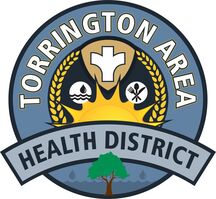Lake and Pond Swimming Areas
The northwest part of Connecticut is dotted with numerous lakes, ponds and streams that provide a major attraction for summer recreational activities. The Torrington Area Health District has, for a number of years, maintained an extensive bathing water sampling program for lakes and ponds in our member towns. We only test municipal bathing areas maintained by the member towns. The sampling period extends from Memorial Day to Labor Day. Beaches at State parks are tested by the State Department of Environmental Protection, and information about their water quality can be obtained from their website during the operating season. Federally owned flood control dams used for recreation swimming are under the jurisdiction of the Army Corp of Engineers.
The suitability of bathing water is evaluated using a concentration of E. Coli organisms less than or equal to 235 per 100 milliliters which is generally considered satisfactory for a single sample from a bathing area. Decisions to close a swimming area are based on an overall review of the bathing water quality and watershed, not on a single high bacteria test. The bacterial water quality in the lakes and ponds monitored in the Health District has been historically very good. Many of the lakes and ponds do suffer from nutrients from lawn fertilizers and agricultural operations and they have serious weed and algae problems that detract from their appeal.
The sanitary quality of bathing water is dependent on a number of factors. An imaginary line drawn around a lake encompassing all the land that eventually drains into that lake defines what is referred to as a "watershed". Activities that take place on the watershed can have an impact on water quality. Failing septic systems, large farms, storm water runoff as well as land development have an effect on the overall water quality. The number of swimmers also can effect short-term water quality. Large numbers of bathers in a confined beach area tend to increase the bacteria levels. As the number of bathers decreases these levels fall back due to the large amount of dilution water and the constant current movements of the lake or pond. In some very small bathing ponds that are subject to heavy use, it is sometimes necessary to add fresh water from wells or springs to the pond. The rule of thumb for small ponds with inlet and outlet flow is that there should be a minimum of 1000gallons\day\bather available for dilution.
The resident duck and goose population around some of the ponds and lakes in the Health District has increased tremendously in recent years. Although their waste does not contain any organisms that produce illness in humans, it does have a high concentration of fecal bacterial that can effect water sample results and the accumulation of droppings on the beach are aesthetically objectionable. There are a number of wildlife management practices that can be instituted to make the sites less attractive to waterfowl. Waterfowl should not be encouraged to live on a recreational lake or pond by feeding them. Up-to-date information on beaches and ponds can be obtained by contacting the Health District during our sampling season.
The suitability of bathing water is evaluated using a concentration of E. Coli organisms less than or equal to 235 per 100 milliliters which is generally considered satisfactory for a single sample from a bathing area. Decisions to close a swimming area are based on an overall review of the bathing water quality and watershed, not on a single high bacteria test. The bacterial water quality in the lakes and ponds monitored in the Health District has been historically very good. Many of the lakes and ponds do suffer from nutrients from lawn fertilizers and agricultural operations and they have serious weed and algae problems that detract from their appeal.
The sanitary quality of bathing water is dependent on a number of factors. An imaginary line drawn around a lake encompassing all the land that eventually drains into that lake defines what is referred to as a "watershed". Activities that take place on the watershed can have an impact on water quality. Failing septic systems, large farms, storm water runoff as well as land development have an effect on the overall water quality. The number of swimmers also can effect short-term water quality. Large numbers of bathers in a confined beach area tend to increase the bacteria levels. As the number of bathers decreases these levels fall back due to the large amount of dilution water and the constant current movements of the lake or pond. In some very small bathing ponds that are subject to heavy use, it is sometimes necessary to add fresh water from wells or springs to the pond. The rule of thumb for small ponds with inlet and outlet flow is that there should be a minimum of 1000gallons\day\bather available for dilution.
The resident duck and goose population around some of the ponds and lakes in the Health District has increased tremendously in recent years. Although their waste does not contain any organisms that produce illness in humans, it does have a high concentration of fecal bacterial that can effect water sample results and the accumulation of droppings on the beach are aesthetically objectionable. There are a number of wildlife management practices that can be instituted to make the sites less attractive to waterfowl. Waterfowl should not be encouraged to live on a recreational lake or pond by feeding them. Up-to-date information on beaches and ponds can be obtained by contacting the Health District during our sampling season.


